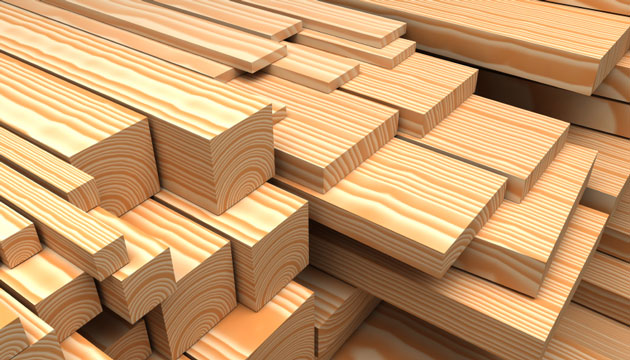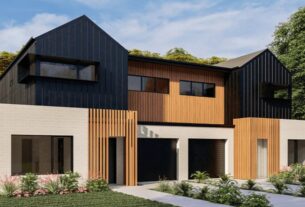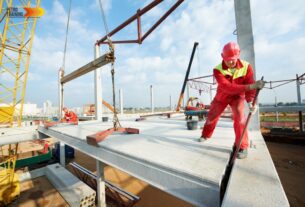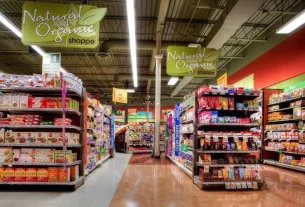Timber battens, sometimes referred to as wooden laths or strips, have long been a common material for building. Thin, flat pieces of wood known as “timber battens” are often employed in the building sector. Timber feature wood panels are typically available in a variety of diameters and thicknesses and are made of softwoods like fir, spruce, or pine. Due to their adaptability, affordability, and sustainability, timber battens are often used in roofing, cladding, flooring, and partitioning applications.
Wood batten use promotes sustainable forest management practices and job creation, which benefits the forestry industry. In addition to providing a less expensive option, picking wood battens for your construction project encourages the ethical use of a renewable resource. They provide a strong basis for other building materials like tiles, slates, flooring, or cladding. Compared to other building materials such as concrete or steel, timber battens are more affordable, versatile, and sustainable. They are a natural material that lends a warm, homey feel to any construction endeavour. Timber battens are a popular alternative for construction projects because they are simple to work with, strong, and resistant to decay, rot, and insect damage compared to other building materials. This makes them a favoured option for many builders. This post will examine the characteristics, advantages, and applications of wood battens in the building sector.
Properties of Timber Battens
Timber battens come in a variety of diameters and thicknesses and are often produced from softwoods like pine, spruce, or fir. While 38mm x 19mm is the most typical size, other sizes may be produced to meet the exact specifications of a project. These battens are perfect for a variety of applications since they are lightweight, flexible, and simple to use.
The Benefits of Timber Battens
If you’re considering using timber battens for your next construction project, here are some reasons why you should choose them:
- Affordability
When compared to other construction materials, timber battens are more affordable, particularly when handling and shipping costs are taken into consideration. As a result, they are an excellent option for initiatives with little resources.
- Sustainability
When obtained from sustainable forests, timber is a renewable resource with no negative environmental effects. This makes it a greener option for construction materials than other ones.
- Versatility
Timber battens may be used for a variety of projects, including partitions, floors, roofing and cladding. They may be drilled, moulded, and chopped to fit into any building project.
- Durability
With the right upkeep, wood battens may survive for many years since they are strong and long-lasting. They are a solid option for outdoor building projects since they are also resistant to rust, decay, and insect damage.
- Installation Simplicity
Timber battens are straightforward to handle and install during construction since they are lightweight, flexible, and easy to deal with.
- Beauty Appeal
Timber battens are appropriate for a range of aesthetic needs since they may be painted, stained, or treated with a preservative to protect against weathering.
- Workability
Battens made of wood are simple to deal with and may be drilled, chopped, and shaped as required.
- Aesthetics
Timber battens can add a warm and natural touch to any building, making them suitable for use in decorative applications.
Uses of Timber Battens
- Roofing
Timber battens are often used in roofing projects because they provide tiles, slates, or other roofing materials with a solid foundation. They provide a sturdy and robust support for the roof and are simply screwed or nailed into place.
- Cladding
Timber battens, which are also used for cladding, add an aesthetic touch to the exterior of a building. To prevent deterioration from the elements, they may be painted, stained, or given a preservative treatment.
- Flooring
The flooring is supported by wooden battens, which provide a sturdy platform for the floors. They may be used for more contemporary, concrete-based flooring systems as well as more conventional flooring projects like floorboards or parquet.
- Partitions
Timber battens are also used for partitions and wall cladding, providing a flexible and adaptable solution for dividing a space. They can be used to create a range of partition types, including full-height, half-height, and modular partitions.
Summary
Since ancient times, timber battens have been a popular building material because they are adaptable, inexpensive, and sustainable. Timber battens are a great option for a variety of building projects, including roofing, cladding, flooring, and partitions, due to their strength, resistance to decay and rot, simplicity of installation, and aesthetic appeal. Timber battens provide a durable and robust option that can be utilised in both residential and commercial construction, and they may endure for many years. Additionally, since they are a renewable resource derived from sustainable forests, their eco-friendliness makes them a sensible option for individuals trying to reduce their environmental impact. Timber battens are a common option for building projects of all sizes and kinds because of their many advantages.





